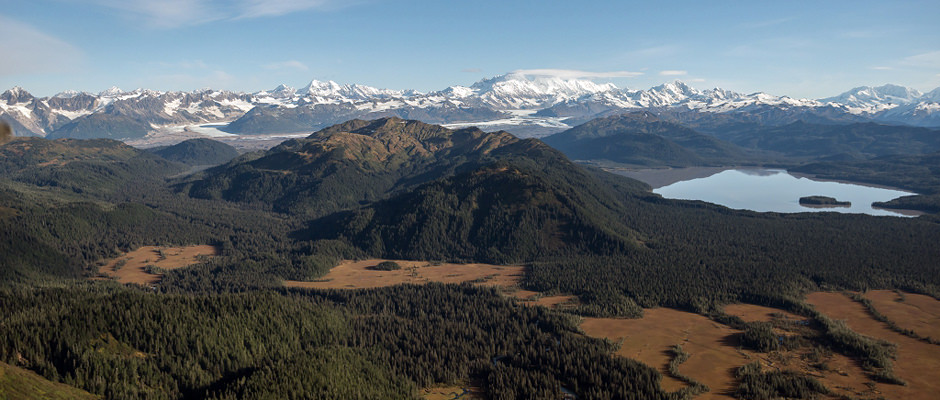Bering River Coal Conservation Initiative:
Keep Coal in the Ground
Help support the conservation purchase the last 11,920-acres of the historic Bering River coalfields. In the heart of a roadless wild salmon rainforest, it remains under threat of mountain-top removal mining
The Bering River coalfields are currently owned by the South Korean Korea Alaska Development Corporation (KADCO). We only have one chance left to acquire the title and permanently conserve this world-class wildlife corridor.
The South Korean owner of KADCO, Dr. Joo Shin, remains willing to sell this 11,000-acre coal title. Time is of the essence as Dr. Shin is over 80 years old and his health is declining.
This Bering River coal "keep it in the ground" campaign actually has over a 110-year history. In 1906, the efforts of President Theodore Roosevelt and Gifford Pinchot, the first Chief of the USFS, to retire the Bering River coalfields are credited with launching the conservation movement in the United States.
After a century-plus of devoted work this is our last chance to retire the Bering River coalfields. Conserving these high-value bituminous coalfields will protect regional food security and a unique, world-class wild salmon habitat. In addition, conserving the coalfields will keep an estimated 100-185 million metric tons of carbon dioxide in the ground.
Why is the Bering River region important?
The Bering-Copper River watershed along the Gulf of Alaska coastline is one of the most unique and productive ecological areas in the Northern Hemisphere. A complex network of glacial ice, rivers, and rainforests, this region supports critical habitat for millions of birds, mammals, and wild salmon. It is one of the only remaining untouched wild watershed ecosystems on Earth. Alaskan Natives continue to practice a flourishing subsistence lifestyle rooted in over 10,000 years of cultural experience with the place.
Yet the location of the coalfields is also critical as a gateway to a region that is being aggressively pursued for new extractive development. If the coalfields are sold to a coal mining company, infrastructure and mining would facilitate the destruction of these sacred Eyak lands.
Whose livelihoods are at stake?
Each year, the Copper River Delta and Prince William Sound support approximately 500 commercial gillnet fishing operations, several hundred purse seine fishing operations, and important sport and subsistence fisheries. Unfortunately, the persistent demand for coal poses a grave threat to the local economy and the food security of Native and non-Native fishermen.
What has been done to protect the Bering River region?
The Forest Service clearly favors conservation over development in this rich wild salmon region of the Copper River Delta. In fact, the Delta, including the Bering River reegion, is one of only two districts in the entire U.S. Forest Service system that by law must be managed first and foremost for the priority conservation of fish and wildlife and their habitats.
In December, 2016 another piece of the Bering River conservation puzzle was solved in a great victory. 62,000 acres—over 80% of the Bering River subsurface coalfields—were retired in perpetuity along with associated surface rainforest. EPC helped nurture this particular deal through three years of effort with Chugach Alaska Corporation and New Forests (a forest management services agency that negotiates and funds carbon-offset transactions). Utilizing this new-to-Alaska carbon-trade instrument, CAC's trees will be left standing and provide carbon-exchange income to their shareholders for decades to come. This transaction represented the largest carbon-offset deal in Alaska's history. And through EPC's insistence, a unique aspect of the transaction was CAC's sale of their Bering River coalfields patents, and equally important, the 62,000 acres of coal have now been placed into the Native Conservancy Land Trust (co-founded by EPC in 2003) with a conservation covenant.
However, 11,920 acres of coalfields remain for sale and vulnerable to mining.
Get Involved – reach out and see how you can help ensure a healthy Bering-Copper River watershed for future generations. The last 15% of the Bering River coalfields must be purchased and protected.



